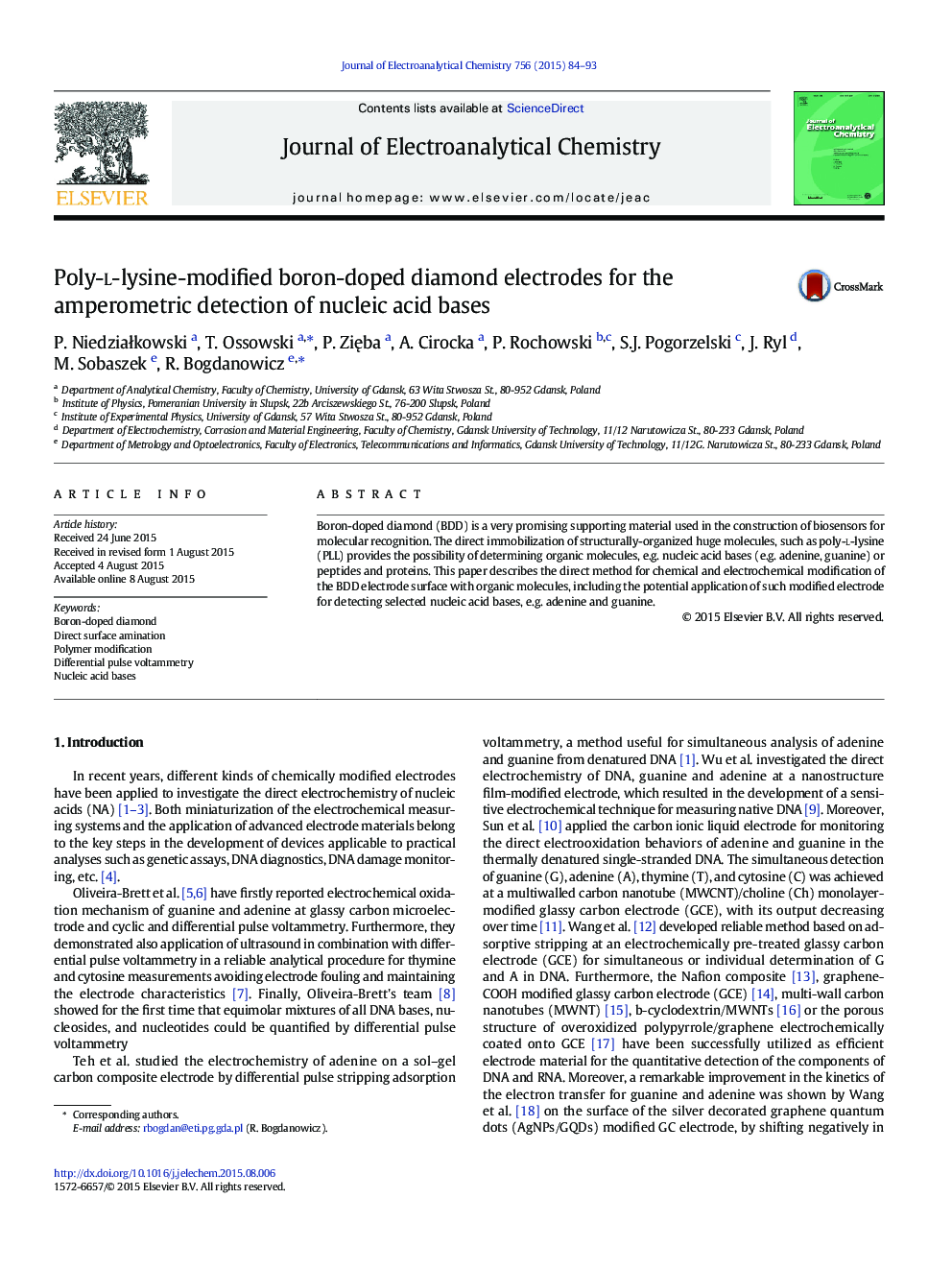| Article ID | Journal | Published Year | Pages | File Type |
|---|---|---|---|---|
| 218292 | Journal of Electroanalytical Chemistry | 2015 | 10 Pages |
•Chemical and electrochemical modification of the BDD electrode by poly-l-lysine was applied.•Label-free amperometric guanine and adenine detection was achieved by using BDD/PLL.•Any redox mediator in the analyte during detection procedure is required.•The BDD/PLL shows linear behavior from 6 μM to 3.15° 10− 2 mM.•Electrodes can be used for detection of guanine and adenine at different pH.
Boron-doped diamond (BDD) is a very promising supporting material used in the construction of biosensors for molecular recognition. The direct immobilization of structurally-organized huge molecules, such as poly-l-lysine (PLL) provides the possibility of determining organic molecules, e.g. nucleic acid bases (e.g. adenine, guanine) or peptides and proteins. This paper describes the direct method for chemical and electrochemical modification of the BDD electrode surface with organic molecules, including the potential application of such modified electrode for detecting selected nucleic acid bases, e.g. adenine and guanine.
Graphical abstractFigure optionsDownload full-size imageDownload as PowerPoint slide
